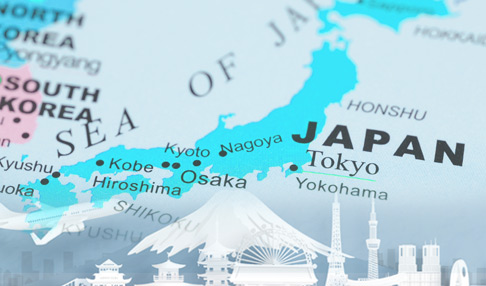Money in Japan (Banknotes and Coins)
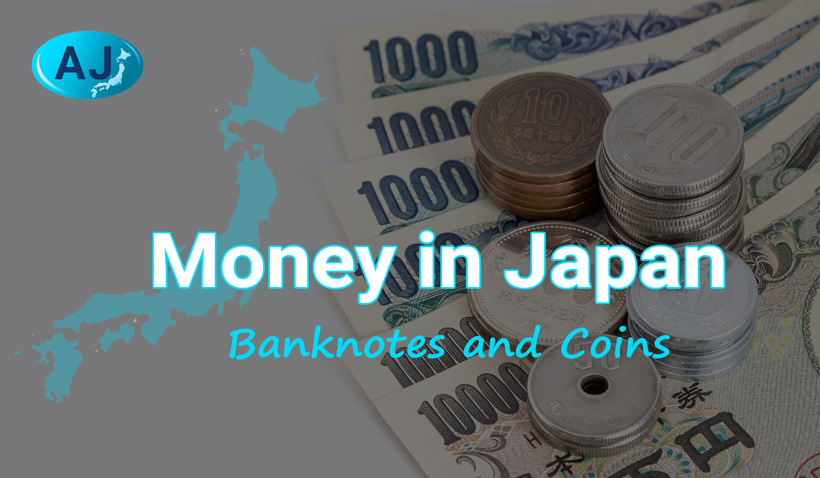
Despite growth of credit card use, you will still find yourself paying by cash on many occasions in your daily Tokyo life. Surprisingly, there are still many restaurants and stores which will not accept credit card payments.
Here we explain to you the official currency of Japan and how to use it.
The official currency in Japan is Yen. (¥)
There are 4 types of paper bills: ¥1,000, ¥2,000, ¥5,000, ¥10,000 and 6 types of coins.
Banknotes (Paper money)
The most common paper bills you will see are the ¥10,000, ¥5,000, ¥1,000 paper bills. ¥2,000 paper bills are very rare. Many foreigners are surprised that Japanese paper bills remain in good condition for a long time.
JPY10,000

This is the maximum amount for the Japanese paper bill.
The front of this bill features an image of the samurai Yukichi Fukuzawa (1835 - 1901) who was also an intellectual and an educator. One of the top Universities in Japan, Keio University was founded by Yukichi Fukuzawa. His most famous book is "Gakumon no susume" (An Encouragement of Learning) was written in 1872.
On the reverse side of the bill is a picture of the ho-o phoenix (fictional beast) statue from the Byodo-in temple in Uji, near Kyoto. The ho-o phoenix is said to bring fortune and happiness to the people.
Large bills like this ¥10,000 yen bill are not accepted in most vending machines and when paying for parking. But they are accepted when purchasing train tickets or train passes (SUICA or PASMO,) since people take the train long distance and sometimes charge their pre-paid cards. When you take the taxi for a short distance, the taxi driver might be short with change so please try to use smaller bills when paying.
JPY5,000

The front of the ¥5,000 features Ichiyo Higuchi (1872- 1896) from Meiji Era, Japan's first prominent female writer. Although she had a short lifetime, dying at the age of 24, her stories had a large impact on Japanese literature and are still respected to this day.
On the reverse side is the painting "Kakitsubata" by Ogata Korin (1658 - 1716,) which is considered a national treasure.
Large bills like the ¥5,000 yen bill are not accepted by most vending machines or when paying for parking. They are however accepted when purchasing train tickets or train passes (SUICA or PASMO) since people take the train long distance and sometimes charge pre-paid cards.
JPY2,000

The ¥2,000 was issued in 2000 to commemorate the 26th G8 Summit and the millennium.
This paper bill is rare to find. Shureimon, a 16th-century gate at Shuri Castle in Okinawa Prefecture is on the front side. The backside depicts "Suzumushi," a scene from the Tale of Genji.
As mentioned above, this bill is rare and many vending machines will not accept this bill.
JPY1,000

¥1,000 has a portrait of Hideyo Noguchi (1876 - 1928,) a bacteriologist who discovered the agent of syphilis as the cause of progressive paralytic disease in 1911. He was nominated for Nobel Prize but soon died in West Africa from Yellow fever.
The backside of the paper has a picture of Mt. Fuji and its reflection in the lake (from a photo taken by Kouyo Okada from Niigata prefecture,) and cherry blossoms.
This is the bill that is most used of the paper bills. This bill is created slightly thicker than others because of how much it is used.
6 different coins - ¥500, ¥100, ¥50, ¥5, ¥1
JPY500 Coin
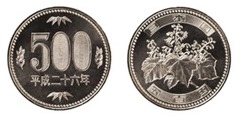
The largest of the yen coins. The front of this coin is engraved with the Paulownia flower (Kiri.) Along the top of the coin, the words "State of Japan" and on the bottom "500 yen," are engraved. Bamboo is engraved on the back of the coin. In Japan, bamboo represents strength and flexibility. Some restaurants have promotions for "one coin" lunches; this means that the lunch is 500 yen.
JPY100 Coin
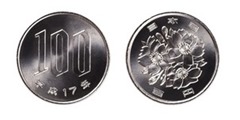
This is probably the coin you will use the most. The front side of the coin has a very largely printed Cherry blossom. 100 yen coins come in handy when it comes to paying at vending machines or when riding the bus.
JPY50 Coin
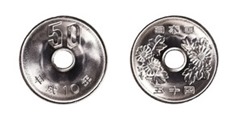
This coin has a hole in the middle with chrysanthemums engraved on the front side. The backside is engraved with the number 50 and the year it was minted.
JPY10 Coin

The Byoudoin is engraved on the front of this bronze coin. Byodo-in is recognized by UNESCO as a World Cultural heritage. This coin is the minimum amount that can be used by vending machines.
JPY5 Coin

This coin also has a hole in the middle. Please keep in mind that this coin cannot be used for vending machines. The front of the coin features a rice plant growing out of the water. The gear around the hole represents industry. The back side is engraved with 2 seed leaves. This coin is called "goen" in Japanese. "Goen" can also mean "fate". This positive coin is used to make the money offering for shrines into the offertory box.
JPY1 Coin

This coin is made out of aluminum and this is the lightest in weight. The front side has a "Wakagi" in the middle, which means a young tree in Japanese. This coin also cannot be used for vending machines.
Tipping
Tipping is not a common practice in Japan. If you try to tip anyone, it will most likely be politely refused. Service charge (10 - 15%) will often be included in your bill.
Example: At restaurant
If you leave a tip on the table, the waiter might come chasing after you thinking that you forgot your money on the table.






